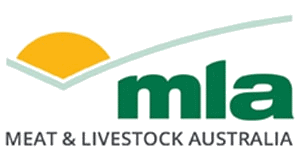A reverse vaccinology approach to the development of a cross-protective footrot vaccine
| Project start date: | 15 June 2013 |
| Project end date: | 31 May 2018 |
| Publication date: | 31 May 2018 |
| Project status: | Completed |
| Livestock species: | Sheep, Goat, Lamb, Grassfed cattle, Grainfed cattle |
Summary
Ovine footrot is a debilitating and highly infectious disease that affects the feet of sheep and can lead to loss of body weight and reduced meat and wool production. Since there is no universal vaccine that is protective against all serotypes of the causative agent, Dichelobacter nodosus, there is a clear and urgent need for a multivalent footrot vaccine that protects sheep against all serogroups of D. nodosus.
The overall objectives of the project were to use a reverse vaccinology approach to identify antigens of D. nodosus that can be used to develop a multivalent vaccine that will protect sheep against ovine footrot. The specific aims were: (1) to test the vaccine potential of 26 proteins that had not yet been tested in sheep in pen vaccination trials, (2) to test potentially protective antigens, including promising antigens previously identified, in a pen-based sheep vaccination trial and (3) to test promising vaccine candidates in a field-based vaccination trial.
Vaccine antigens were purified and formulated into different vaccine combinations containing either one, two or three antigens. In either pen- or pasture-based vaccination trials, groups of 10-13 sheep were vaccinated twice with a specific vaccine preparations and then challenged with a heterologous virulent strain of D. nodosus. To determine the effectiveness of each vaccine treatment the development of footrot lesions then was monitored quantitatively for up to 30 days after infection.
The project has been successfully completed and promising vaccine candidates identified. Of the 26 vaccine candidates that remained to be tested prior to the commencement of this project, 23 were examined for their ability to protect sheep against heterologous footrot challenge. In all 86 D. nodosus-derived antigens have now been tested, achieving the original objectives. Of the remaining antigens either their structural gene could not be cloned or the proteins could not be purified. An important development of this project was the establishment of a more reproducible irrigated pasture-based, natural footrot transmission model. This model was so successful that vaccine trials that were originally intended to be carried out with the pen-based model were switched to the more reproducible pasture model.
Several promising candidates identified in the initial experiments were retested either alone or in combination with other antigens. Based on the results it is concluded that five candidates are worthy of further examination and either alone, or preferably in combination, offer the potential for development into a cross-protective footrot vaccine that could be used for the control and treatment of ovine footrot. The development of such a vaccine would have significant economic benefits for the Australian Sheep Industry, reducing the burden of disease and leading to significant improvement in animal welfare. However, it is clear that the data are still too preliminary to embark upon commercial vaccine production.
Further studies are required to optimise the antigen solubilisation and purification methods, the antigen dose, the antigen combinations and the nature of the adjuvant and the emulsion. These studies should lead to double-blind field testing of the optimal vaccine preparation on several Australian sheep farms in areas prone to ovine footrot.
More information
| Contact email: | reports@mla.com.au |


